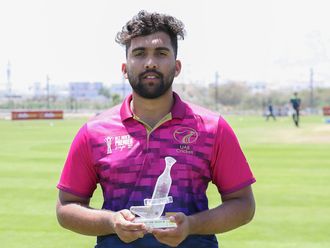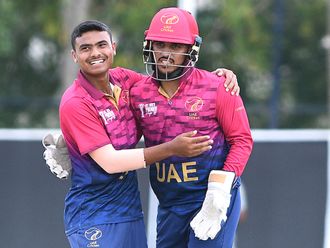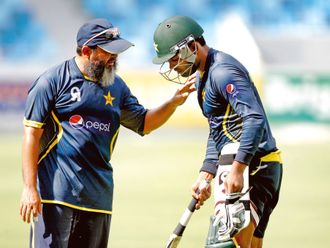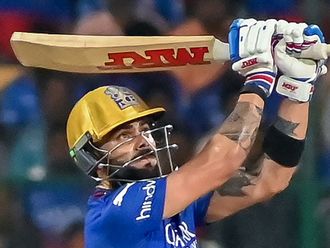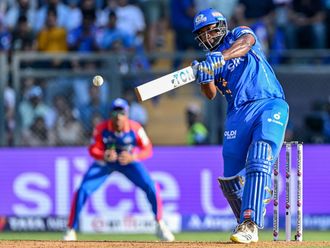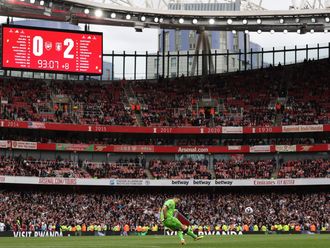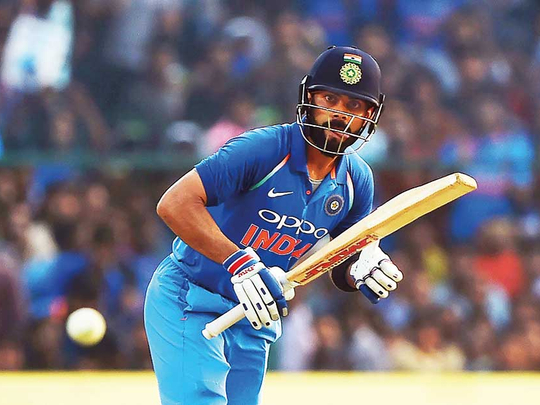
Dubai: Virat Kohli, the man they call ‘King Kohli’ for good enough reasons, cannot help being in the news these days. The other day, a nugget of information from Forbes magazine was enough to raise the eyebrows — that the Indian captain had overtaken Lionel Messi in terms of brand value and is at No. 7 among the richest athletes of the world in 2017 with an estimated worth of $14.5 million.
This is not the first time an Indian cricketer has proved to be a Forbes chartbuster — with Sachin Tendulkar and Mahendra Singh Dhoni enjoying their pride of place as the richest cricketer for a number of years not so long ago. Neither of them had, however, managed to break into top-10 — a fact which underlines how the global endorsement sector has warmed up to India over the last five years or so — a period which has coincided with the rise in stature of Kohli from a promising stud among the ‘Men in Blue’ to easily the most influential cricketer of this generation.
It’s impossible to ignore ‘The Virat Effect’ if you are a cricket fan — more so at a time when the game is struggling in its search for the genuine superstars — be it the batsman, bowler or a world class all-rounder. The last occasion when a rightful debate raged on about the best batsman’s tag was between ‘Sachin, Lara or Ponting,’ till the three greats walked into a golden sunset — one after the other. The rise of Kohli coincided with two of his peers in Steve Smith from Australia and Joe Root of England, with the gifted Kiwi Kane Williamson lurking by as the distant fourth candidate for the best batsman’s mantle.
Not anymore, perhaps. If the recent spate of records suggest that the current year belongs to Kohli, so had been the case last two seasons in a manner of speaking — such had been the level of domination of the 28-year-old effervescent character from New Delhi — more so in the shorter version of the game. The tall-scoring thriller in Kanpur against New Zealand on Sunday evening was a perfect case in point — if one thought that Kohli surpassed AB de Villiers to become the quickest to reach 9000 one-day runs, one was not taking cognisance of at least another half-a-dozen records that fell by the wayside.
Here’s a quick run through some of them — Kohli, who scored his sixth one-day hundred this year on Sunday, has now scored more than 2000 runs in all formats. This is, incidentally, the third time he has scored more than 2000 runs in all formats in a year — with 2016 seeing him amass a total of 2595 runs in 41 innings across all formats. He has now equalled Tendulkar’s record of achieving the feat three times in a row, though the ‘Little Master’ had reached the mark five times in his overall career.
The just-concluded series against Kiwis have seen Kohli leapfrog Ponting in the number of ODI centuries and with 32 three-figure knocks in his kitty, the Indian skipper is now only second behind Tendulkar (49) in the number of one-day centuries. Given a batsman’s career span is approximately till 35 years, Kohli should hypothetically have a good seven to eight years left in the game — which should see him overhaul the Little Master in the one-dayers.
The confidence levels, which borders on arrogance (no wonder Sir Viv Richards feels Kohli reminds the legend of himself) and fitness levels, sees Kohli hardly putting a foot wrong in the limited overs game these days. There are two phases in a Kohli hundred in ODIs these days: if the first fifty is often watchful and about finding the gaps, he starts to wield the bat like a brush in the second half — experimenting with some audacious stroke play to guide the ball past the fielders and using his lofted drives, short arm pulls at will.
If his exploits in Tests is not often talked about in the same breath, it’s his Herculean efforts in ODIs and T-20s which should take the ‘blame’. Signalling his arrival at a time when the ‘Fab Four’ was at the pick of his prowess in 2008, Kohli had to wait for a good three and-a-half years to make his Test debut in 2011 — though it didn’t take him long to prove that he was ready for the long haul.
A piece of number-crunching here will not do any harm — ever since taking over the Test captaincy in end-2014, Kohli was the quickest among Indian captains to reach 1000 overseas Test runs. His resolve and hunger for runs showed when after being at the receiving end of some stinging criticism for his discomfiture against the moving ball during the 2014 tour of England — Kohli was candid enough to talk about it and worked hard to iron out the flaws and come back stronger.
As far as the game of cricket goes, the brand value of Kohli is now priceless!


